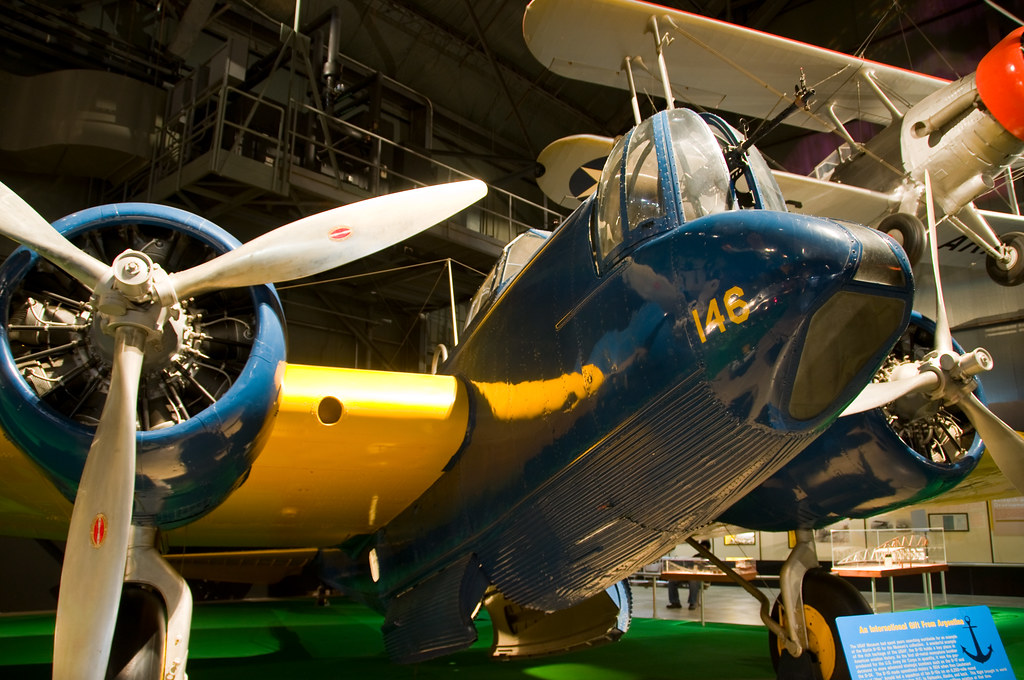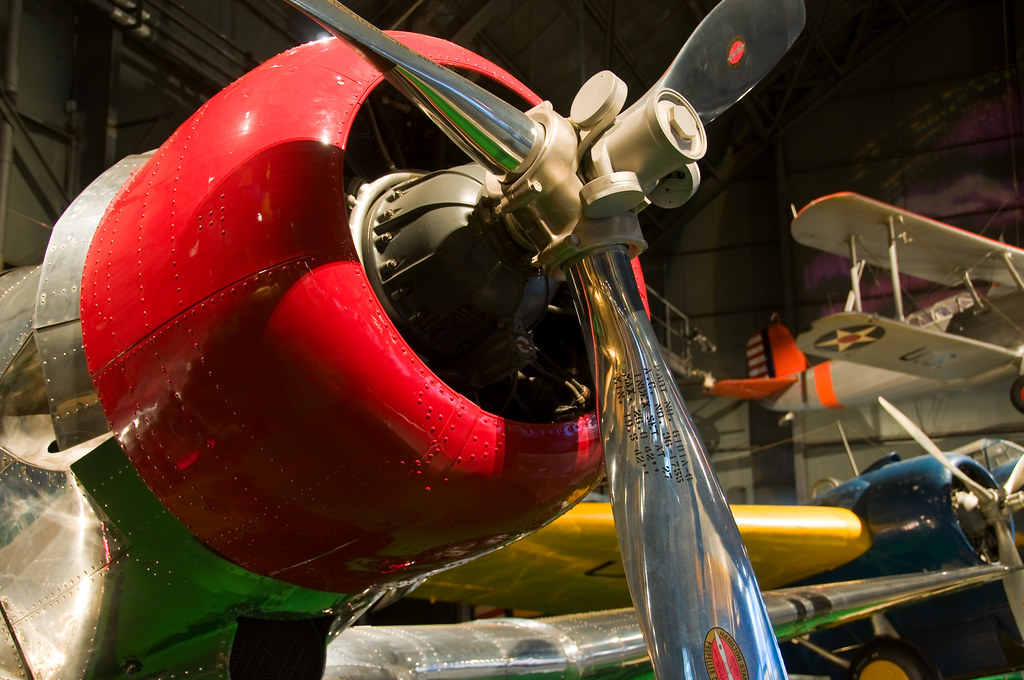
Boeing P-26A
The P-26A marked a significant step in the evolution of fighter aircraft -- it became the U.S. Army Air Corps' first all-metal monoplane fighter in regular service. Affectionately nicknamed the "Peashooter" by its pilots, the P-26A could fly much faster in level flight than the Air Corps' older wood and fabric biplane fighters. The P-26A also had a higher landing speed. Although not initially delivered with wing flaps, P-26As were later fitted with them to reduce landing speeds. Even with its monoplane design and all-metal construction, the Peashooter retained some traditional features, such as an open cockpit, fixed landing gear and external wing bracing. The P-26A became the last Air Corps fighter to have these obsolete characteristics. This P-26A reproduction is painted to represent the commander's aircraft of the 19th Pursuit Squadron, 18th Pursuit Group, stationed at Wheeler Field, Hawaii, in 1938.

Kellet K-2/K-3 Autogiro
Before World War II, aeronautical engineers sought to build an aircraft capable of making short takeoffs and landings. Eventually, their efforts produced the helicopter, but they also pursued a less common design -- the autogiro. Like helicopters, autogiros used a rotary wing to produce lift. However, unlike helicopters, the engine did not power the autogiro's rotor. Instead, aerodynamic forces made the autogiro rotor spin, while the engine propelled the aircraft. In 1931 the Kellett brothers, Wallace and Rod, manufactured 12 K-2 autogiros. Based on existing Cierva and Pitcairn autogiro designs, the K-2 incorporated a much larger blade area, a simplified landing gear and a wider fuselage to accommodate side-by-side seating. Equipped with a 165-hp Continental A-70 engine, the K-2 could carry a useful load of 609 pounds at a top speed of 100 mph, a cruise speed of 80 mph and a stall speed of 24 mph. In 1932 Kellett produced an improved model, the K-3. Powered by a 210-hp Kinner C-5 engine, it had a top speed of 110 mph, a cruise speed of 90 mph and a stall speed of only 15 mph. Kellett produced six of these aircraft, with two of them being modified K-2s. To observe enemy forces and to control artillery fire, the U.S. Army needed an aircraft capable of flying very slowly, and the autogiro seemed to be a perfect solution. Therefore, the U.S. Army Air Corps tested both versions of the Kellett at Wright Field, but these aircraft lacked the performance necessary for military applications. Later versions of the Kellett autogiro proved more successful, and the Army Air Corps purchased a small number of Kellett YG-1s, the first practical rotorcraft procured by the Army Air Corps, at the end of the 1930s. The Kelletts sold two K-3s to the Japanese War Office in 1932, but the most famous Kellett was the K-3 that Admiral Richard E. Byrd used on his Antarctic Expedition of 1933-1934.

Martin B-10 with the Douglas O-38F above.
The B-10, the first "modern" all-metal monoplane bomber produced in quantity, featured such innovations as retractable landing gear, a rotating gun turret and enclosed cockpits. Powered by two 775-hp Wright R-1820 Cyclone engines, Martin's advanced design made the B-10 50 percent faster than contemporary biplane bombers and as fast as most of the fighters. This capability convinced many U.S. Army Air Corps planners that bombers could successfully attack strategic targets without long-range fighter escort. In the largest procurement of bomber aircraft since World War I, the Air Corps ordered 121 B-10s from 1933-1936. The Air Corps also ordered an additional 32 of these aircraft with 700-hp with Pratt & Whitney R-1690 Hornet engines and designated them B-12s. Gen. Henry H. "Hap" Arnold, who called the B-10 "the air power wonder of its day," led 10 B-10s on a 8,290-mile flight from Washington, D.C., to Fairbanks, Alaska, and back in 1934. By the late 1930s, B-17s and B-18s had replaced the Air Corps' B-10s and B-12s, but the Chinese and Dutch air forces flew export versions in combat against Japan at the start of World War II.

Front part of Northrop A-17A
The A-17 series was a direct descendent of the pace setting Northrop "Gamma," made famous by the aerial explorer Lincoln Ellsworth. It replaced the Curtiss A-8 and A-12 Shrike and was the last of the pre-World War II single-engine attack aircraft ordered into production by the Army Air Corps. Caught in the pre-WWII doctrine that emphasized air superiority over ground support, the A-17 was never fully tested in peacetime exercises or in combat. Its fate was sealed in 1938 when the Army Air Corps determined that all future attack aircraft procured would be multi-engine models. Despite this handicap, the A-17's design and novel features such as split perforated flaps figured prominently in the success of a distinguished line of Douglas aircraft including the Dauntless dive bomber and the post-WWII Skyraider. The first 109 production A-17s featured fixed, partially enclosed landing gear. One hundred twenty-nine A-17As configured with fully retractable landing gear and a more powerful engine followed between February 1937 and August 1938. The A-17A could lift over one ton of bombs. The bombs were carried on four external racks and in an internal bomb bay that featured vertical chutes, which held up to 20 30-pound fragmentation bombs. In addition to the bombs, the A-17A was armed with four forward-firing .30-cal. machine guns for strafing, and one flexible mounted .30-cal. gun in the rear cockpit for self-defense. A-17As saw unit service for less than four years. In June 1940, all but 20 A-17As were sold overseas. The remaining Army Air Forces A-17 and A-17As were used as advanced trainers and squadron support aircraft, most ending up as ground maintenance trainers. The last A-17A was written off of Army Air Forces records in early 1945.

No comments:
Post a Comment